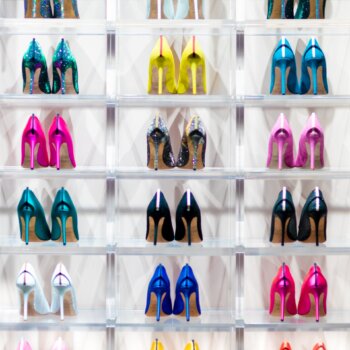
Collectors vs counterfeiters: Shut up and don’t take my money
Anime is a booming industry that was worth around USD24 billion in 2019 and is continuing to grow on an international scale.[1] As the anime industry grows so too does the market for related merchandise with more people beginning to collect anime figures which brings with it its own challenge of counterfeiters. One brand protection strategy could be to team up with fans to crack down on counterfeiting.
Although demand for anime figures has been growing for years, for many fans outside of Japan there has been an issue with getting access to these plastic treasures. Most figure manufacturers are Japanese and do not have official outlets in the West (or generally not in the UK and Europe), so fans have been faced with a lack of choice and steep import charges. In addition, many fans getting into anime for the first time or even family members hoping to buy gifts simply don’t know where to start and will often just blindly buy a figure of their desired character assuming it is legitimate.
As a result, online retailers, marketplaces and conventions often have counterfeit figures on sale. Many of the counterfeiters have spent considerable effort to ensure their packaging matches the real deal as closely as possible which, when combined with being marketed at close to the RRP of the legitimate figures, makes it difficult to determine authenticity both online and in the rush of a convention.
However, hope is not lost. Online communities are working to stop counterfeiters through educating members on how to tell a Ditto from a Pikachu and warning others of counterfeit versions that exist. A great example of the latter is MyFigureCollection.net (affectionately known as MFC by fans) which, amongst other things, hosts a database of figures that includes for each catalogued figure whether a counterfeit version is known to exist and photos of the counterfeit figure to compare with those of the real deal, making it easier for fans to make informed purchases.
Counterfeiting is an issue for all businesses involved in merchandising anime and manga, from the anime studios and mangakas producing the source material who lose out on royalties, to the figure manufacturers whose reputations are being tarnished and sales cut, through to the online retailers and marketplaces having to monitor sellers and deal with buyer complaints. Traditional IP protection measures such as customs registrations and cease and desist letters haven’t stopped counterfeiting and it continues to be a big issue in the anime figure market, but these community initiatives may offer another avenue to IP rights holders.
A collaboration with the likes of MFC to provide official photos of all variations of the legitimate figures, as well as a critique of the counterfeit’s photos, would make MFC even more accurate and effective. Such a collaboration could also include the option to report counterfeits to the IP rights holders to enable them to take action against the counterfeiters. A reporting function would give businesses access to an army of eyes with an expansive reach that would only enhance any web scanning tools already being utilised. Alternatively running events or educational videos with the help of the online communities will further raise awareness of this issue and help even first-time figure collectors to avoid purchasing a counterfeit figure. A bonus of such collaborations would of course be the goodwill generated by showing engagement with the fans on this issue.
At the end of the day engagement with fan communities could be a cost effective and potent tool in an IP rights holder’s arsenal when it comes to dealing with counterfeiters. The potential for this approach is not limited to the anime industry – anything collectable could benefit.








